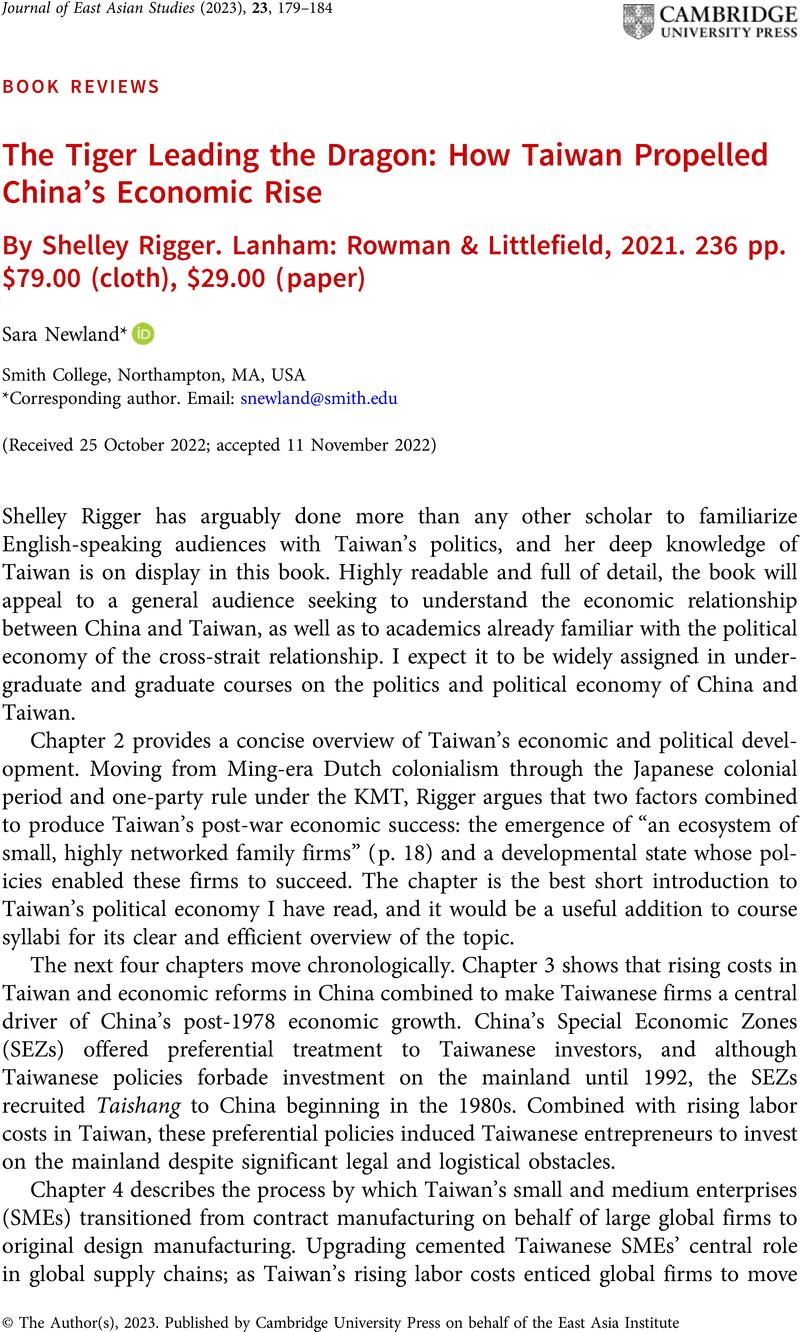No CrossRef data available.
Article contents
The Tiger Leading the Dragon: How Taiwan Propelled China’s Economic Rise By Shelley Rigger. Lanham: Rowman & Littlefield, 2021. 236 pp. $79.00 (cloth), $29.00 (paper)
Review products
The Tiger Leading the Dragon: How Taiwan Propelled China’s Economic Rise By Shelley Rigger. Lanham: Rowman & Littlefield, 2021. 236 pp. $79.00 (cloth), $29.00 (paper)
Published online by Cambridge University Press: 03 March 2023
Abstract
An abstract is not available for this content so a preview has been provided. Please use the Get access link above for information on how to access this content.

- Type
- Book Review
- Information
- Copyright
- Copyright © The Author(s), 2023. Published by Cambridge University Press on behalf of the East Asia Institute



